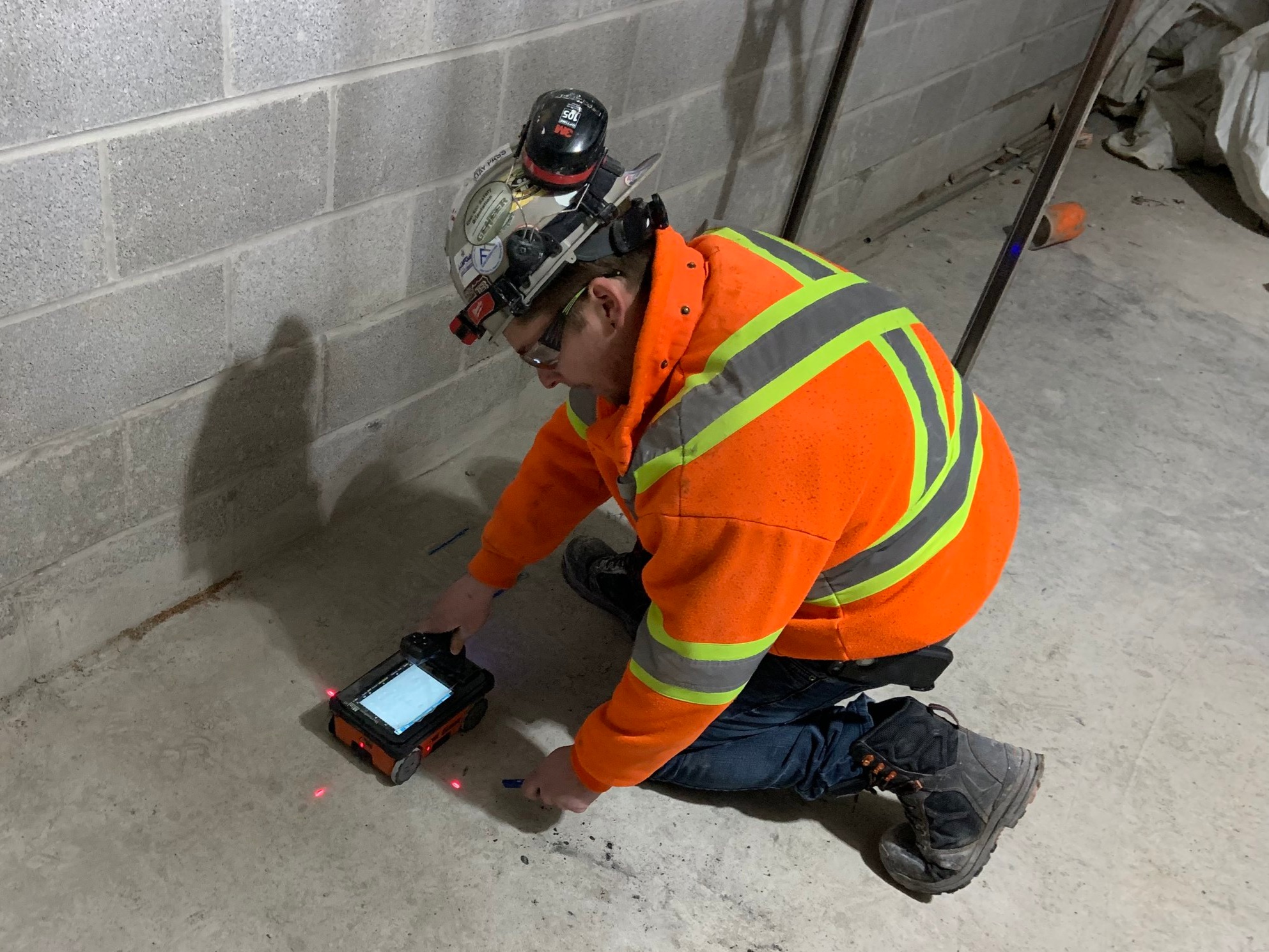RainierGPR Concrete Scanning: Cutting-edge Solutions for Complicated Projects
RainierGPR Concrete Scanning: Cutting-edge Solutions for Complicated Projects
Blog Article
Discovering the Key Advantages of Concrete Scanning in Building And Construction Projects
In the realm of modern-day building and construction practices, the utilization of concrete scanning modern technology has actually arised as a critical tool for making sure task efficiency and architectural integrity. From enhancing security steps to precisely identifying energies concealed under the surface, the advantages of concrete scanning are multifaceted. RainierGPR Concrete Scanning.
Boosted Safety Actions
Utilizing innovative concrete scanning innovation boosts precaution on building websites by providing accurate discovery of prospective risks concealed beneath the surface area. This technology allows building and construction teams to identify rebar, avenues, post-tension cords, and various other blockages prior to excavation or drilling, significantly reducing the risk of accidents. By determining these aspects exactly, employees can avoid destructive crucial architectural parts, thus preventing injuries, hold-ups, and costly repair work.
In addition, concrete scanning plays an essential duty in making certain the honesty of existing frameworks during growths or renovations. By finding weaknesses, gaps, or deterioration within concrete aspects, engineers can attend to these problems proactively, enhancing the total security and longevity of the structure. This aggressive method not only mitigates the danger of architectural failures yet additionally lessens the potential for crashes caused by unanticipated structural shortages.
Essentially, the application of concrete scanning innovation works as a proactive precaution that safeguards both building and construction employees and the structural honesty of structures, eventually adding to the overall success and performance of building tasks. - RainierGPR Concrete Scanning
Accurate Discovery of Energies
Concrete scanning technology assists in exact identification of below ground utilities, boosting building site safety and efficiency. Accurate detection of energies is vital in construction projects to avoid costly problems, project hold-ups, and most significantly, make certain the security of employees and the public. By utilizing advanced scanning modern technologies such as ground-penetrating radar (GPR) and electromagnetic induction, construction groups can map out the place of buried pipelines, wires, and various other utilities with high levels of precision.

Time and Cost Efficiency

Concrete scanning modern technology makes it possible for building and construction teams to properly locate rebar, post-tension cable televisions, and various other embedded items within concrete structures. This accurate details assists in preventing pricey errors such as accidental damages to vital components during exploration, reducing, or coring activities. Furthermore, by identifying prospective hazards beforehand, the need for expensive repair work or rework as a result of damages can be lessened, leading to set you back savings for the task.

Additionally, the capability to quickly and accurately find utilities below the surface area without creating any kind of damages not just conserves time yet additionally protects against expensive disturbances to existing framework. In general, the time and cost efficiency advantages of concrete scanning make it a vital device for boosting construction task monitoring and execution.
Conservation of Architectural Integrity
Maintaining the structural honesty of buildings and facilities is extremely important in making certain lasting security and security. Concrete scanning plays a crucial duty in this conservation process by permitting building specialists to recognize prospective dangers to the structural stability of a structure or resource infrastructure before they rise into major concerns. Via the use of innovative scanning modern technologies such as ground-penetrating radar (GPR) and electromagnetic induction, building groups can non-invasively analyze the condition of concrete frameworks, find rebar, post-tension wires, and other ingrained elements, and determine any type of spaces, splits, or wear and tear within the concrete.
Improved Task Planning
In order to guarantee the successful implementation of building tasks, meticulous interest to information and comprehensive planning are necessary components that come from a thorough understanding of the structural problems determined through concrete scanning. Improved task planning, assisted in by concrete scanning, allows building groups to preemptively address potential difficulties, allot sources more efficiently, and develop realistic timelines. By precisely identifying the area of rebar, post-tension cable televisions, and other embedded objects within concrete frameworks, project managers can establish a lot more precise building and construction strategies that minimize the threat of pricey errors or delays. In addition, the information gotten from concrete scanning makes it possible for stakeholders to make informed choices pertaining to architectural alterations, restorations, or expansions, causing smoother task changes and improved overall task end results. Eventually, including concrete scanning right into the my review here task planning stage improves sychronisation amongst team members, fosters proactive problem-solving, and contributes to the successful distribution of building projects within budget plan and schedule restraints.
Verdict
Finally, concrete scanning supplies numerous benefits in construction projects. By improving precaution, accurately identifying utilities, improving time and price effectiveness, maintaining architectural honesty, and helping in project planning, concrete scanning verifies to be an essential tool for effective job implementation. Its capacity to mitigate risks, enhance efficiency, and ensure project honesty makes it an important possession for building and construction specialists.
In the realm of modern construction methods, the utilization of concrete scanning modern technology has actually emerged as a critical tool for making sure project effectiveness and structural integrity.Concrete scanning modern technology makes it possible for construction teams to properly locate rebar, post-tension cable televisions, and other ingrained items within concrete frameworks. With the use of sophisticated scanning technologies such as ground-penetrating radar (GPR) and electromagnetic induction, building and construction groups can non-invasively evaluate the condition of concrete frameworks, locate rebar, post-tension wires, and various other ingrained components, and identify any gaps, splits, or degeneration within the concrete.
In order to ensure the news successful implementation of building and construction jobs, precise interest to detail and complete preparation are essential components that stem from a thorough understanding of the structural conditions determined through concrete scanning. Ultimately, incorporating concrete scanning right into the project planning phase improves control amongst team members, promotes aggressive analytic, and contributes to the effective distribution of building projects within budget plan and schedule constraints.
Report this page